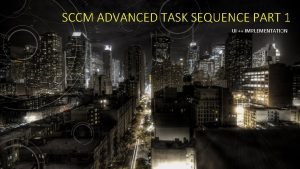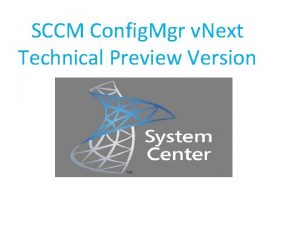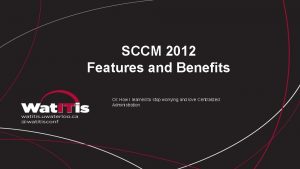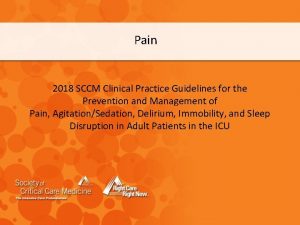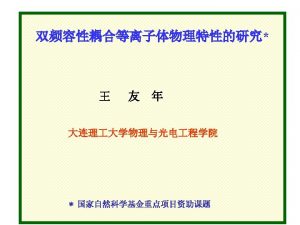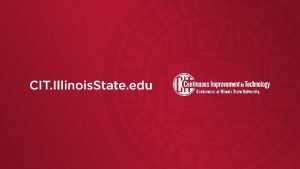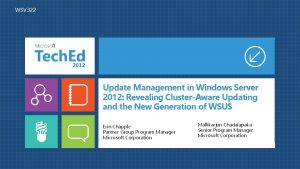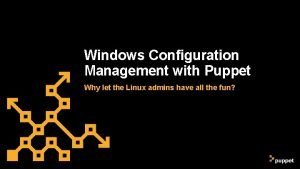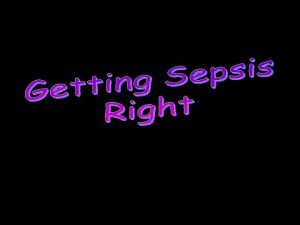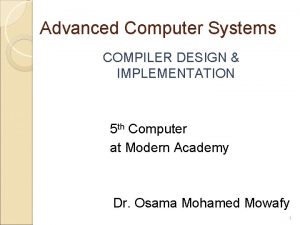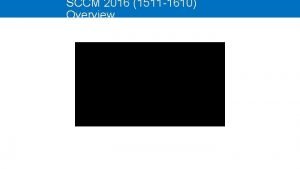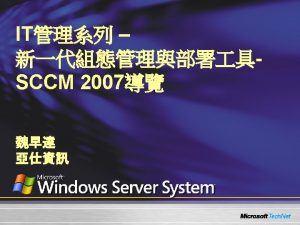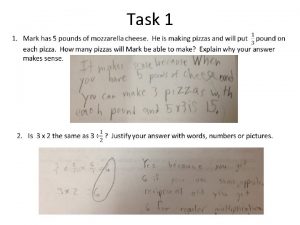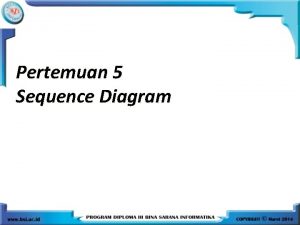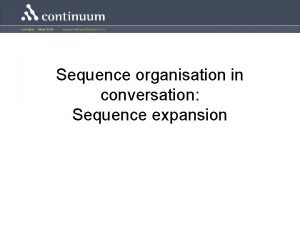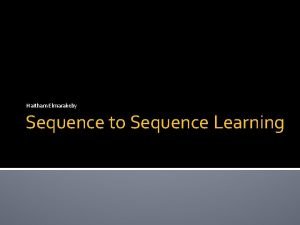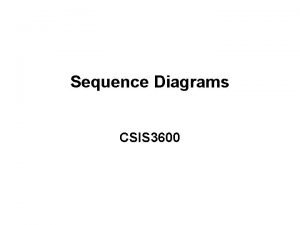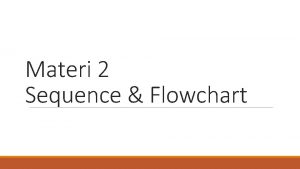SCCM ADVANCED TASK SEQUENCE PART 1 UI IMPLEMENTATION










- Slides: 10

SCCM ADVANCED TASK SEQUENCE PART 1 UI ++ IMPLEMENTATION

WHAT IS UI++ • When imaging it is Possible to use the Network step to join a machine to a specific OU but what if you want different machines assigned to different OUs? What if you also want to name that machine and give it a description with each one varying? What if you also want to place that info into AD? It is not possible with the current steps. So UI++ answers this problem with a convenient and user friendly User Interface. Welcome to UI++.

WHAT IS UI++ • UI++ is a better way to display information to the interactive user, solicit input from that same interactive user, and populate task sequence variables during System Center Configuration Manager (Config. Mgr) Operating System Deployment (OSD). • Nearly every aspect of UI++ is customizable including the number of dialogs, colors, icons, and the exact text to display — everything shown is up to you. • At its heart, UI++ is simply a generic UI framework that is customize through the alteration of scripts.

CUSTOMIZING UI++ • To start working with UI++ you would need to navigate to the UI++ website at https: //home. configmgrftw. com/uiplus/ • From here you can Download all UI++ tools required. This will include the UI++64. exe and the customizable XML. The XML will change what the user sees and what kind of input can be accepted. This is where being able to read a XML really comes in handy.

WORKING WITH THE XML FILE • The XML will directly effect what the user sees and interacts with. To the right on top you will see what the user sees when giving input and on bottom what we see when designing these options. This input will then be placed into variables that are used in the Task Sequence to make more advanced configurations possible.

WORKING WITH UI++ IN THE TASK SEQUENCE • Being able to get UI++ asking the right questions is only the first step. Next is to get it working in SCCM during a Task Sequence. The first step in doing this is considering how we will access UI++ when a new machine has never been domain joined. To do this we must map a network path to a virtual drive allowing us to access it during the Task Sequence. For this we have the Connect to Network Folder Step authored by Jason Sandys who is a regular contributor to the SCCM forums. • https: //home. configmgrftw. com/uiplus/

NEXT WE NEED TO RUN PRE-FLIGHT CHECKS • The preflight checks are a series of steps intended to ensure that a machine is in the proper state to be imaged. Having a machine power off during a Task Sequence could not only ruin the image but damage the drive by shutting it off in the middle of a write procedure. The Pre -flight Checks again are performed by a script which is called from our mapped drive using Powershell.

KICKING OFF UI++ • The first part of kicking off UI++ is to Disable the Progress bar for SCCM so that it doesn’t cover the user input box. After that step has completed we run UI++64. exe with a /config switch that points to the UI 2. xml file for all the required settings. When this launches the user will finally interact with the UI++ interface inputting the requested info. Once that info collected the progress bar is once again enabled.

WHAT INFORMATION IS GATHERED • When the UI++ runs it gathers the following: • Computer Model • Memory • Serial • IP • MAC • The Following input is gathered from the user • Computer name • OS being installed • Name of User • Department of User • This information is gathered than used through out the Task sequence to make custom decisions based on what information the UI has received.

USING COLLECTED VARIABLES • During the UI Variable Collection phase in the top diagram you can see when someone selects the “City” as “Thousand Oaks” this is then stored in the variable name %City%. That variable will then be used later in the Task Sequence when determining what OU to place a machine in. Here in the lower diagram you can see it uses the %City% variable to the OU thus placing this machine in the Thousand Oaks City OU. Variables are used like this through the whole Task Sequence.
